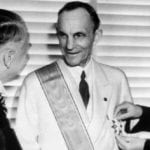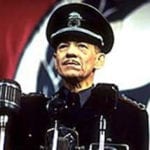 Technology
Technology  Technology
Technology  Humans
Humans 10 Everyday Human Behaviors That Are Actually Survival Instincts
 Animals
Animals 10 Animals That Humiliated and Harmed Historical Leaders
 History
History 10 Most Influential Protests in Modern History
 Creepy
Creepy 10 More Representations of Death from Myth, Legend, and Folktale
 Technology
Technology 10 Scientific Breakthroughs of 2025 That’ll Change Everything
 Our World
Our World 10 Ways Icelandic Culture Makes Other Countries Look Boring
 Misconceptions
Misconceptions 10 Common Misconceptions About the Victorian Era
 Mysteries
Mysteries 10 Strange Unexplained Mysteries of 2025
 Miscellaneous
Miscellaneous 10 of History’s Most Bell-Ringing Finishing Moves
 Technology
Technology Top 10 Everyday Tech Buzzwords That Hide a Darker Past
 Humans
Humans 10 Everyday Human Behaviors That Are Actually Survival Instincts
 Animals
Animals 10 Animals That Humiliated and Harmed Historical Leaders
Who's Behind Listverse?

Jamie Frater
Head Editor
Jamie founded Listverse due to an insatiable desire to share fascinating, obscure, and bizarre facts. He has been a guest speaker on numerous national radio and television stations and is a five time published author.
More About Us History
History 10 Most Influential Protests in Modern History
 Creepy
Creepy 10 More Representations of Death from Myth, Legend, and Folktale
 Technology
Technology 10 Scientific Breakthroughs of 2025 That’ll Change Everything
 Our World
Our World 10 Ways Icelandic Culture Makes Other Countries Look Boring
 Misconceptions
Misconceptions 10 Common Misconceptions About the Victorian Era
 Mysteries
Mysteries 10 Strange Unexplained Mysteries of 2025
 Miscellaneous
Miscellaneous 10 of History’s Most Bell-Ringing Finishing Moves
10 Facts About The African Experience In Nazi Germany
When most people think about racial persecution and genocide during the Nazi regime, the Holocaust is usually the first thing on everyone’s mind. Although it’s true that the Jews endured horrible atrocities, they were not the only ones to suffer under Adolf Hitler’s twisted ideas of racial superiority.
The population of African people living in Germany was relatively small compared to the Jews, but the Africans weren’t spared when the Nazis decided to rid the world of anyone who did not fit their Aryan ideal. The stories of the Africans who lost their lives before, during, and after the war—as well as those who survived—are often forgotten. We believe those stories need to be told.
10 The Death Camps
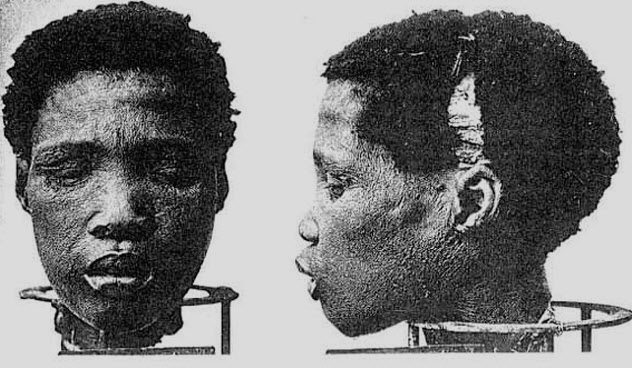
Years before the Nazis came to power, the German army was methodically killing off Africans in a racially motivated genocide. When Germany colonized South West Africa, they created a death camp in what is now known as modern-day Namibia.
In 1904, General Lothar von Trotha gave the order that all native Herero people needed to be exterminated to make space for German colonists. He specifically ordered that the soldiers show no mercy to women and children. In just three years, the Germans killed thousands of people, wiping out approximately 80 percent of the Herero tribe and 50 percent of the Nama tribe.
A total of five different concentration camps were located in Namibia on Shark Island. It earned the nickname “Skeleton Coast” because of the mass graves that are still there. One missionary described a scene of an African woman lying on the ground and wasting away. When she asked for water from fellow prisoners, a German soldier shot her five times, outraged that she would have the audacity to ask for anything.[1]
The soldiers were so proud of their “conquest” that they would have friends document the experience by taking photos of the soldiers surrounded by starving African prisoners. Then the pictures were turned into postcards to send back home. Some postcards even had pornographic images of German soldiers raping African women.
A man named Dr. Bofinger living in Namibia conducted experiments on the cadavers of these prisoners. He was known for decapitating the victims, preserving the heads, and sending them back to scientists living in Germany. At the time, Adolf Hitler was a young child, and none of these horrific crimes were actually associated with the Nazis.
9 Propaganda
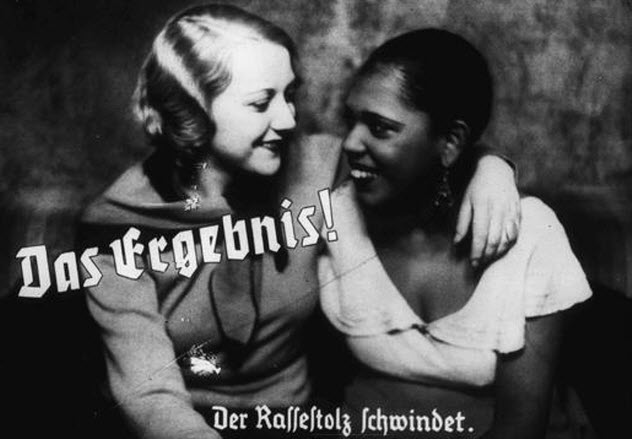
Propaganda played a huge role in influencing the German people’s perspectives of Africans. The vast majority of Germans had no idea what went on in the African colonies. Propaganda was spreading about the friendship between Africa and Germany.
One propaganda poster shows a German woman with her arm around an African woman, claiming that there was no longer any “racial pride” in Germany. The government wanted to encourage citizens to move to all-German colonies in Africa, but the authorities couldn’t convince people to move unless it seemed like an appealing prospect.
After World War I, Germany lost their African colonies to the Allies. Before and after World War I, Germany was losing thousands of people who immigrated to the United States due to rampant unemployment and poverty.[2]
After the rise of the Third Reich in the 1930s, German filmmakers created movies to glorify the history of German colonization in South West Africa. One of the Nazi’s long-term goals was to regain their African colonies and spread the Aryan race all over the world. They wanted people to get excited by the idea through these films.
8 The Rhineland Bastards
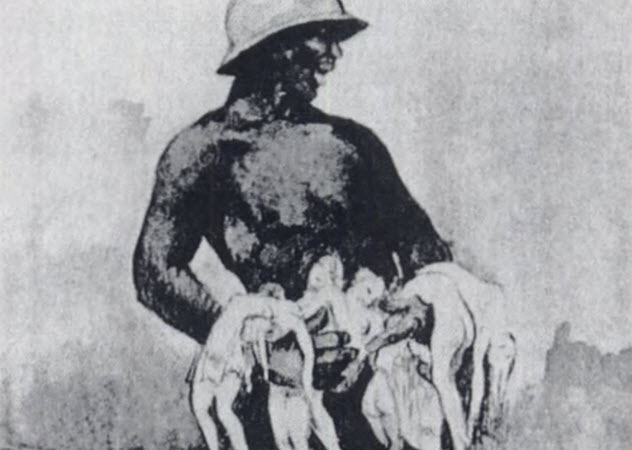
After World War I, the Treaty of Versailles was signed in 1919. Allied troops were stationed in the area of western Germany known as the Rhineland. Many of these troops were black men from the French colonies in Africa.
Hundreds of German women ended up becoming pregnant with the babies of these African soldiers, giving birth to the first significant population of multiracial children Germany had ever seen. These children were nicknamed the “Rhineland bastards.”[3]
The public was outraged. Propaganda began spreading about women falling victim to black men. One illustration titled “Jumbo” showed a Godzilla-sized naked black soldier holding nearly a dozen German damsels in distress. A metal coin was even minted with the image of a white woman being shackled to a gigantic penis on one side and the image of a black soldier on the other side.
The German public was taught to believe that these women had been raped by the African soldiers, although only one woman out of hundreds of mothers ever made that claim. Those who knew that the sex was consensual tried to paint the black men as oversexed predators and the women as demented.
Therefore, their offspring were not worthy. In Hitler’s Mein Kampf, he blamed the Jews for bringing black men into Germany, saying that it was all part of their plan to soil the pure blood of the Aryan race.
7 Rassenschande
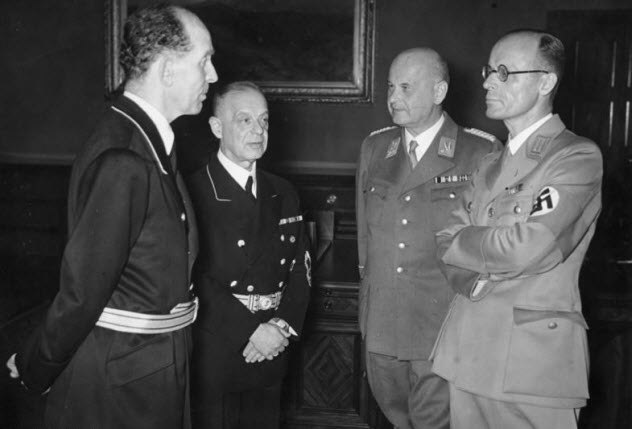
Nazi Germany strongly pushed the idea of Rassenschande, which translates roughly to “racial pollution.” The Nuremberg Laws of 1935 prevented Aryans from having sexual relations with or marrying non-Aryan people.
Most people remember this rule as it applied to the Jews, but of course, it also extended to Afro-German people. German citizens had to undergo medical examinations to get an Aryan certificate to prove that they were “pure-blooded.”
Publications around that time claimed that the Allies introducing African soldiers into Germany was itself an attack on the German population. The Nazis claimed that they were victims of the outside world trying to force racial integration. If they allowed Africans to defile their bloodline, it would mean the end of the German race as they knew it.
Though Germany once had diplomatic ties within Africa and wanted to eventually colonize it again someday, they strongly believed that black people belonged in Africa and nowhere else.[4]
6 Murder And Sterilization

An anthropologist named Dr. Wolfgang Abel ran tests on Afro-Germans and Asian Germans and claimed that many of the children were aggressive, psychotic, and “genetically inferior” to Aryan children. He also claimed that the German mothers who gave birth to them were corrupted after being a sort of alien vessel.
In 1937, the Gestapo was ordered to round up any black people they could find. Many of these blacks were killed, sent off to be sterilized, or used in scientific experiments. Non-German black people who happened to be in Germany at the time were also killed or imprisoned rather than being allowed to return to their home countries.
During Nazi Germany, any person who was considered to carry undesirable DNA was sterilized, which prevented them from having children of their own. There was an order that every single one of the Rhineland bastards must be sterilized. Over 400 sterilization procedures were recorded.[5]
5 The Extraordinary Life Of Hans Massaquoi
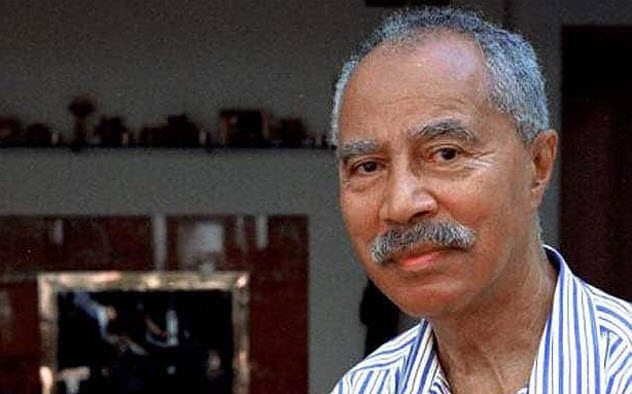
Hans Massaquoi was one of the few black children who survived growing up in Nazi Germany. Hans wasn’t just any boy. He was a prince. Momolu Massaquoi, the king of the Vai tribe in Liberia, was working as a consul general in Germany. His son, Prince Al-Haj, fell in love with a German nurse named Bertha Baetz. She became pregnant with their son, Hans.
However, Al-Haj was a university student in Dublin and never returned to Germany. King Momolu helped to raise Hans at the consulate’s mansion for the first few years of his life. Then the king returned to Liberia. Bertha did not want to leave Germany, so she chose to raise Hans as a single mother in Hamburg and returned to working as a nurse.
When Hans was a child, he was bullied and harassed over the color of his skin. But he was intelligent and friendly, so he was able to make friends with people in his neighborhood. He desperately wanted to become part of the Hitler Youth because they got to wear “cool uniforms” and all his friends were doing it.
Hans was the only child who was left out, and he desperately wanted to fit in. He even got his babysitter to sew a swastika patch on his sweater to wear to school. His mother tried to stop it, but Hans continued to support the Nazis along with the other brainwashed children, not fully grasping what the Nazis were really like.
As he grew up, the war caused starvation and unemployment. As a black man, he was not allowed to work a job. Though he hated what the Nazis stood for, Hans tried to enlist in the German army. He was denied.
In 1948, his father finally stepped up and brought Hans to live in Liberia where he was treated like the prince he actually was. When he grew up, Hans became a journalist for magazines like Jet and Ebony.
Thankfully, Hans was spared the sterilization imposed on others like the Rhineland bastards, most likely because German officials shared with him that he could be useful if the Nazis ever regained control of their African colonies. Hans grew up, moved to the United States, got married, and had children.
Later, he wrote his autobiography, Destined to Witness: Growing Up Black In Nazi Germany, which was made into a movie in Germany.[6] The entire film is available on YouTube.
4 Human Zoos
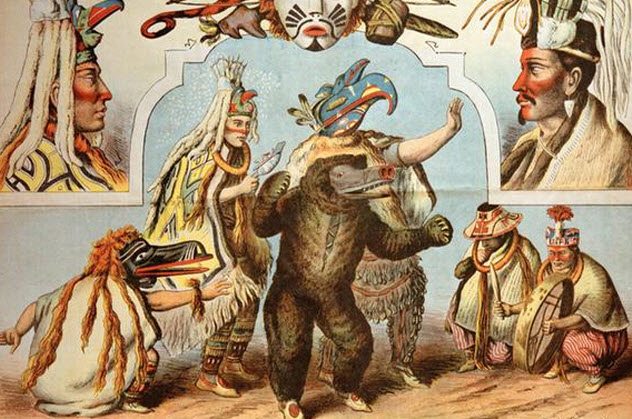
Theodor Wonja Michael’s parents were from a German colony in Cameroon. They were taught to believe that the “motherland” was a wonderful place, so they moved to Germany, believing that they could find a better life.
Once they arrived, they were horrified to learn that Africans were not allowed to be hired for normal jobs. Unfortunately, they didn’t have enough money to go back home to Cameroon. They all had to work as actors in a human zoo. They were called “People’s Shows,” where black actors dressed in grass skirts and sat in front of mud huts picking at a fire and pretending to act like savages.
These human zoos typically traveled with a circus. Many of them were set up inside actual German zoos, right next to the monkeys. The showrunners claimed that these were Africans who were recently captured from their homes and given a habitat just like where they came from, exactly like animals.
German people would watch, laugh, and mock these Africans, not knowing that many of them actually spoke German, too. Around 400 human zoos existed in Germany until the 1930s.[7]
After the end of the Nazi regime, human zoos became a thing of the past—until 2005. The Augsburg Zoo in Germany set up a display of native African life, including mud huts, grass skirts, and tribal dance. They placed it with the baboon exhibit, which is exactly what happened during the Nazi era.
Considering that black people had been compared to wild beasts and baboons in Germany for years, it was a clearly racist exhibit. People were so outraged that the zoo began receiving threatening letters.
Protesters picketed the zoo until the display was removed. The Augsburg Zoo maintains that they were not trying to bring back “human zoos,” and they deny seeing any racist correlation.
3 The African Campaigns
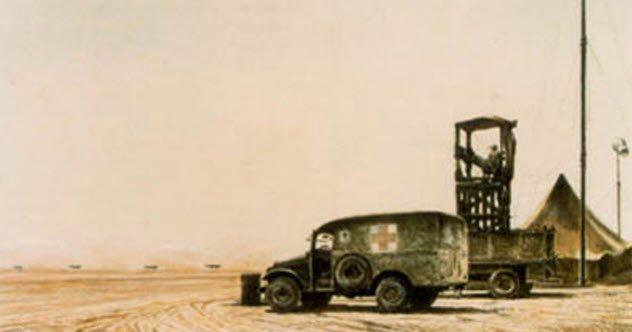
History remembers the lives lost during the bombings of the Blitz in London and so many other attacks on civilians throughout Europe. Yet few memorials bring attention to the lives that were lost in Africa. Much of the fighting during World War II happened in the countries of North Africa between the European colonies, which kept the war far away from European civilians.[8]
Similar to today’s wars, the battle was also waged over controlling oil supplies in the Middle East. According to the United States Holocaust Memorial Museum, roughly one million European soldiers died or were injured during the campaign in North Africa. Germany had control over Tunisia for a short time in 1942 and immediately set out to “neutralize civilians.”
The National WWII Museum has a chart of all the civilian casualties across the globe during World War II. Yet the countries of North Africa are suspiciously excluded.
Some may argue that the desert terrain where the battles took place was not highly populated, but civilian deaths in these countries were recorded elsewhere in biographies and personal accounts. Yet it seems as though no one stopped to recognize these people and keep track of the numbers.
2 Prisoners Of War
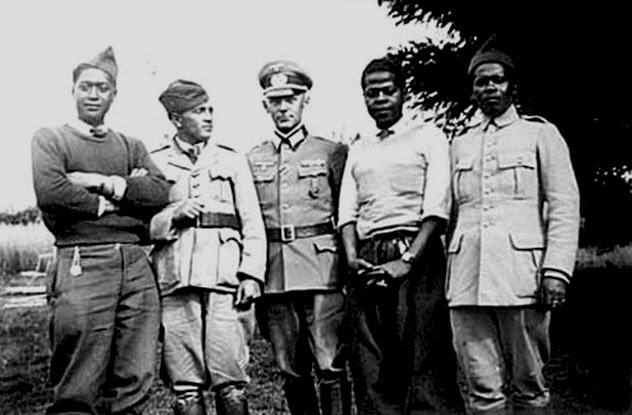
There is a code of honor that prisoners of war (POWs) should be left alive, even if only to be traded for the capturing country’s own soldiers. These prisoners are usually used for manual labor, extracting secrets, and as pawns against the enemy. As The Journal of American History points out, both the Axis and Allied powers were guilty of war crimes against POWs during World War II.
The Nazis had no qualms about killing the African soldiers who were fighting from the French colonies. In fact, the Germans probably saw this as revenge for the enemies’ “crimes” against the German women in Rhineland.
African prisoners of war were not allowed to set foot on German soil for fear that they would defile the purity of the German race. They were housed at prison camps called the Frontstalags in France. These prisoners came from Algeria, Tunisia, Southeast Asia, West India, Madagascar, and Morocco, just to name a few places.
Nonwhite prisoners were sent to the Frontstalags. Vintage photographs show that the prisoners were forced to live in flimsy handmade tents with virtually no protection from the cold.
In 1941, there were over 100,000 prisoners at the Frontstalags. By 1942, there were only 44,000 left. The prisoners were forced into hard labor, and tuberculosis spread rampantly among all the men, who were constantly in close proximity to one another. In 1943, Germany commanded the French government to take over guard duty for the prisoners at the Frontstalags.
Once the French were in charge of the people from their own colonies, they began to provide a “godmother” service where female volunteers would cook, read, educate, knit, and give religious sermons. Some of them fell in love with these prisoners of war, giving birth to mixed-race babies.
Unfortunately, even after the war was over, these men were not allowed to return home or marry the women with whom they had children. The men were still considered to be members of the French military and were regrouped to live in barracks.[9]
1 After The War
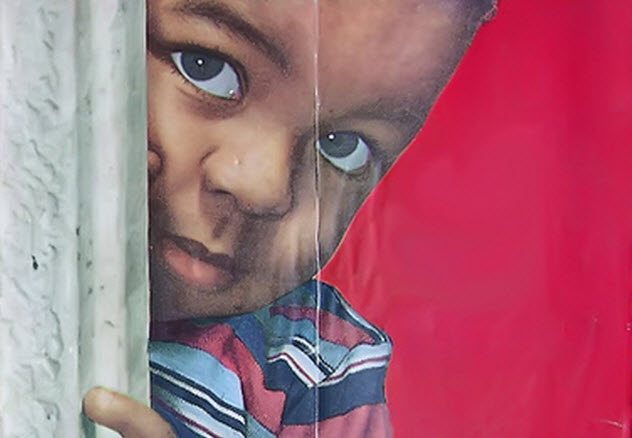
When the war was over, soldiers from the United States occupied Germany, which resulted in the births of what Germans called Mischlingskinder (“brown babies”). The German media used these kids as an example of how much Germany had changed by accepting mixed-race children into their society. The media also said that within just 10–20 years, everyone had come to embrace all races.
Despite their portrayal, racist views were still very much alive and well after the war. The vast majority of mixed-race babies were abandoned in orphanages. One cover of Ebony magazine showed a picture of a black child with blue eyes. Under the picture was the caption: “Homes Needed For 10,000 Brown Orphans.”
In the 1950s, thousands of African-American families stepped up to adopt these kids. Still, many children were left unwanted and abused in German orphanages.[10] A documentary filmmaker named Regina Griffin interviewed dozens of the now-adult Afro-Germans in a movie called Brown Babies: The Mischlingskinder Story. The documentary shares incredibly tragic stories of these children, including one boy whose caregiver at the orphanage tried to drown him.
Today, there are few black people living in Germany. The United Nations released an official warning in 2017 to black tourists that they should never go into certain areas of Germany if they don’t want to get killed. The UN is also investigating reports that teachers grade Afro-German children poorly in schools on purpose and that there is rampant job discrimination.
Shannon Quinn is a writer and entrepreneur. You can find her on Twitter.
Read more about Nazi atrocities on Top 10 Horrific Nazi Human Experiments and 10 Horrible Atrocities Committed By The SS.

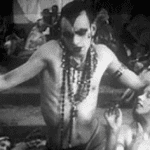

![10 Worst Massacres Of African-Americans [DISTURBING IMAGES] 10 Worst Massacres Of African-Americans [DISTURBING IMAGES]](https://listverse.com/wp-content/uploads/2019/10/vote-150x150.jpg)


